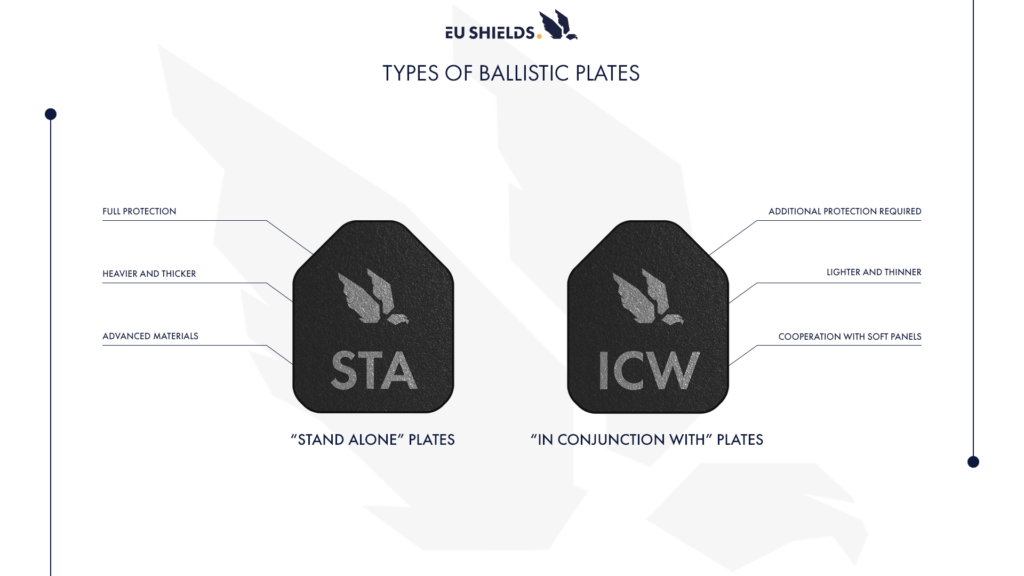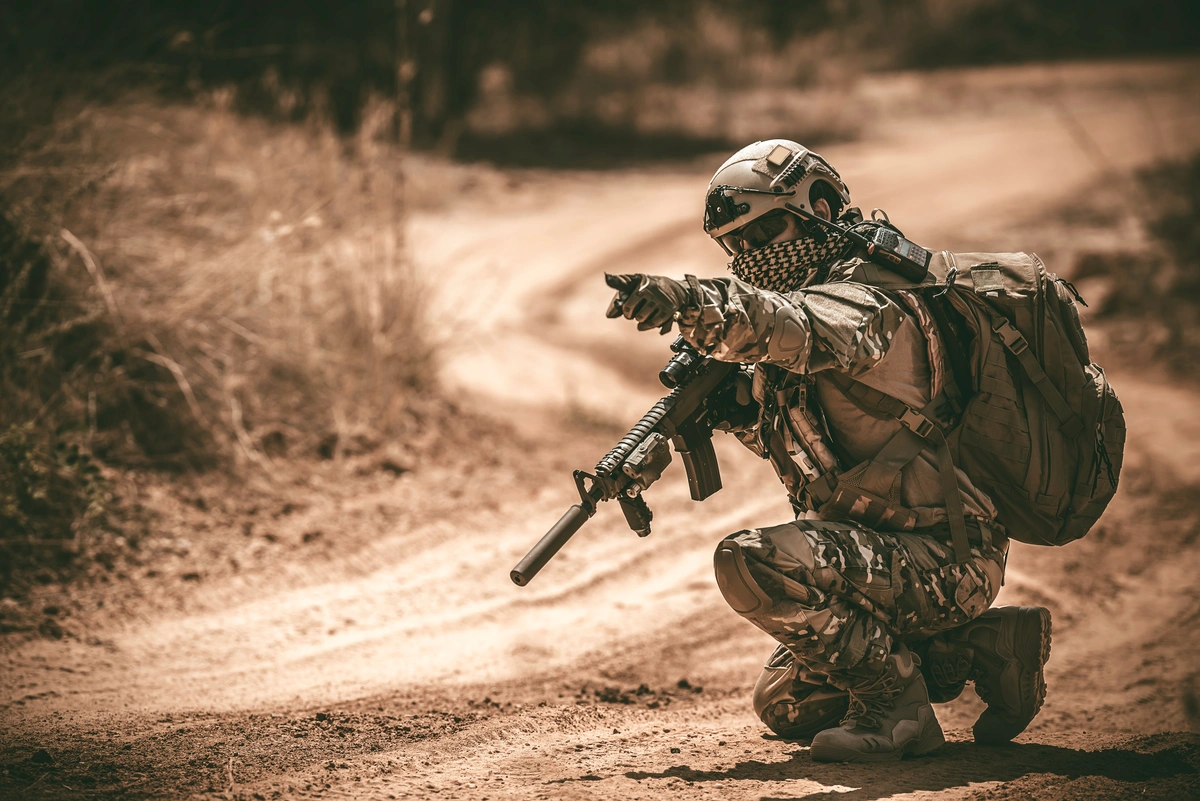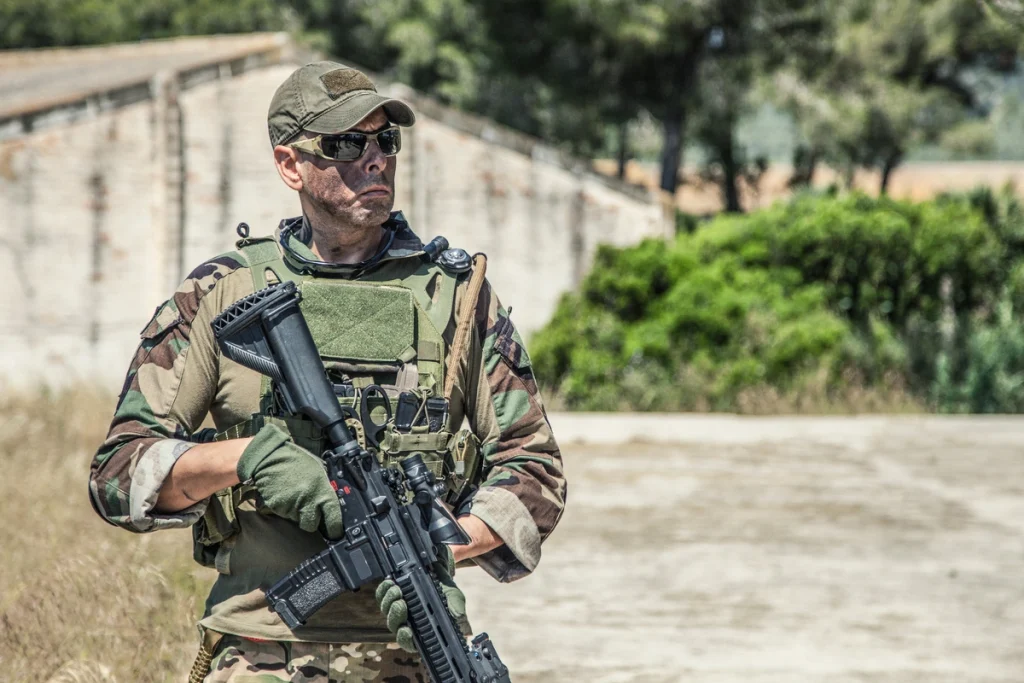Ballistic plates are an essential part of personal protection systems, used primarily in bulletproof vests by the military, police and security. Designed to stop bullets, they are made of a variety of materials like ceramic and polyethylene, offering different levels of protection. There are two main types: STA plates, which provide protection on their own, and ICW plates, which require additional soft layers. Choosing the right type depends on the threats and the needs of the user.
What are STA (Stand Alone) plates?
STA (Stand Alone) plates are a key component of ballistic protection systems, designed to provide protection without additional layers. Their unique design, based on advanced materials such as ceramic, high-strength polyethylene and aramid fibers, allows them to stop bullets on their own.
They are characterized by their ability to absorb and dissipate the kinetic energy of the projectile, which increases the safety of the user. STA plates are available in various shapes and sizes, allowing customization to meet individual needs and specifications. They are used by the armed forces, police and in personal protection, making them an essential part of modern protective equipment.
What are ICW (In Conjunction With) plates?
ICW (In Conjunction With) plates are lightweight and thin protective elements used together with soft bulletproof vests. Their main feature is the need for an additional ballistic layer to achieve full protection.
Made of advanced materials such as ceramic and polyethylene, ICW plates are designed to work synergistically with soft panels to effectively dissipate the force of projectile impact. They are preferred for situations requiring mobility and comfort, especially in dynamic operational environments.
The choice of ICW plates requires tailoring to the individual needs of the user and the type of threat, allowing the creation of an optimal ballistic protection system.

Comparison of protection: STA vs ICW
A comparison of the protection offered by STA (Stand Alone) and ICW (In Conjunction With) boards sheds light on the differences in approach to ballistic protection. STA plates are designed to provide protection on their own, without the need for additional ballistic layers. The result is that they tend to be heavier and thicker, but offer complete protection as a single component.
On the other hand, ICW plates are lighter and thinner, which translates into greater comfort and mobility for the wearer, but they require use in conjunction with soft bulletproof vests to be fully effective. This combination allows for a more flexible adaptation of the level of protection to specific needs and situations.
In practice, the choice between the two types of plates depends on the specific requirements of the user, such as the level of threat, the mobility needed and the time and conditions of wear. STA plates are often preferred in situations requiring maximum protection without compromise, such as military operations or special tasks. ICW plates, on the other hand, are ideal in scenarios where flexibility, lightness and comfort are key, such as in long-term police operations or personal protection. This comparison underscores that there is no one-size-fits-all solution in ballistic protection; each choice of ballistic plates should be dictated by individual needs and circumstances.
Weight and comfort
Weight and comfort are key factors when choosing ballistic plates, especially in the context of long-term use. Heavier plates, such as those of the STA (Stand Alone) type, offer a high level of protection, but can limit mobility and cause wearer fatigue, especially during dynamic operations or long hours of wear. On the other hand, lighter ICW (In Conjunction With) plates offer greater comfort and better mobility, but require an additional layer of protection, which can affect the overall weight of the system.
It is important to find a balance between protection and comfort. The choice of appropriate plates should be made taking into account the specific requirements of the wearer, such as the duration of wear, the type of tasks performed and the operating environment. Modern technologies and materials, such as advanced composites and ultralight polymers, make it possible to produce plates that are both lightweight and provide a high level of protection, responding to the growing demand for comfortable yet effective personal protection solutions.

Typical applications
Typical applications for ballistic plates include a wide range of scenarios where protection from shooting projectiles is crucial. STA (Stand Alone) plates are often chosen by military and special police units for tasks where maximum protection is essential, even at the expense of greater weight and limited mobility. They are used in combat operations, anti-terrorism missions, and high-risk situations.
ICW (In Conjunction With) plates, on the other hand, are preferred in situations where greater mobility and comfort are required, as in routine police operations, personal protection, and patrol operations. Their light weight and reduced thickness make them ideal for prolonged wear, especially in less intense operational environments.
Ballistic plates are also used by security guards, security personnel and civilians in violence-prone areas. Their adaptability to different conditions and user needs, from top-level protection to discreet under-clothing protection, testifies to the versatility and importance of these protection systems in today’s world.
The importance of ballistic plates
In summary, ballistic plates play a key role in modern personal protection systems. Diverse types, such as STA (Stand Alone) and ICW (In Conjunction With) plates, offer different levels of protection, weight, and comfort to suit a wide range of applications – from intensive military operations to everyday police operations and civilian protection. Choosing the right type of plate should be carefully considered, taking into account individual needs, specific threats, and operational requirements.
Developments in material technology and innovations in ballistic plate design continue to advance, providing even better protection while maintaining or even enhancing the comfort and mobility of users. Just as the world is changing and new challenges are emerging, ballistic protection technology is evolving and adapting, providing safety and protection for human life in increasingly effective ways.


